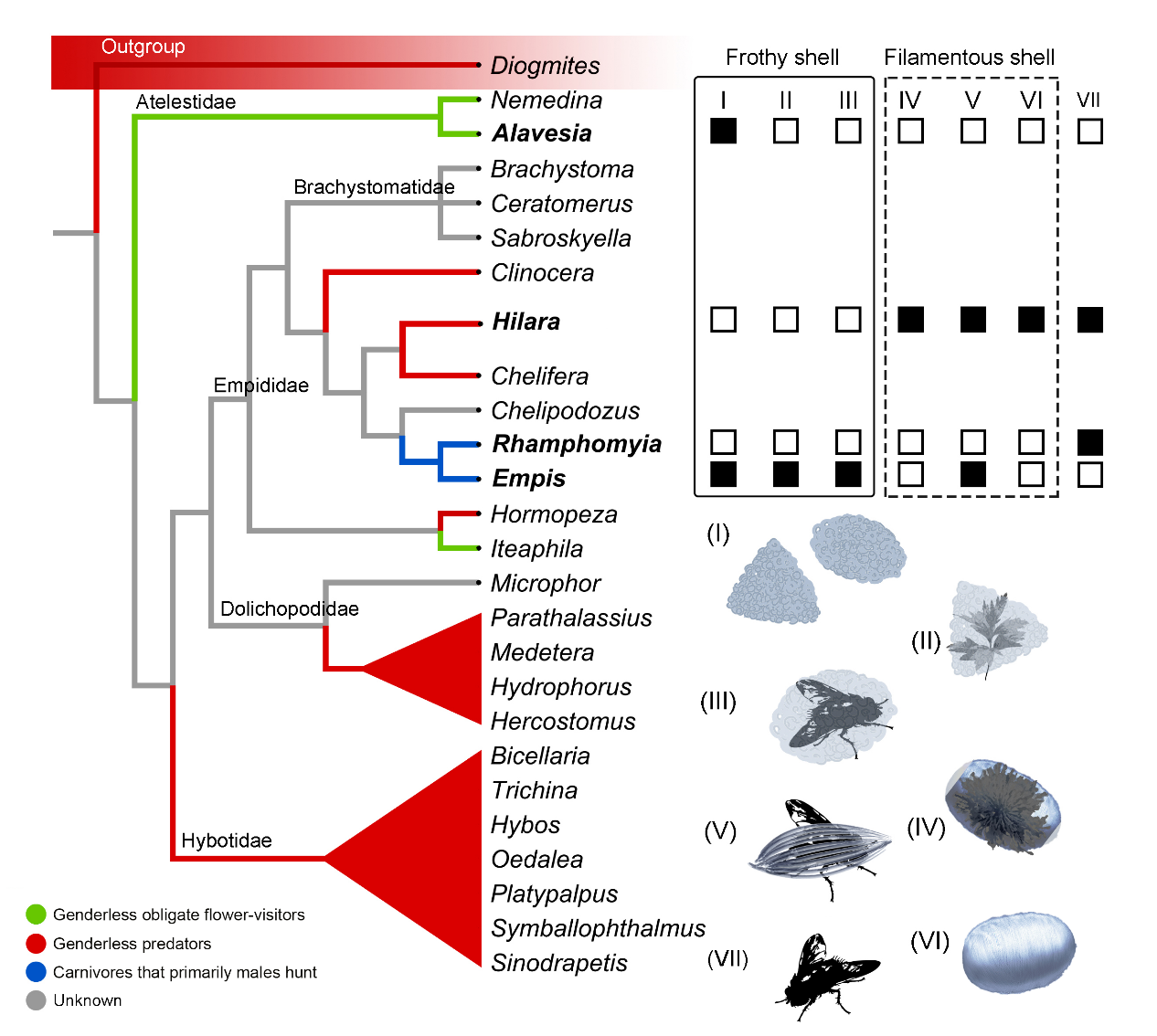Nuptial gift-giving is a universal habit occurring from mollusks to humans and has played a significant role in sexual selection, mate choice, the expression of exaggerated traits (in both males and females), among many other evolutionary and ecological influences. Rightly so, these complex behaviors have been the focus of intense study by behavioral ecologists, evolutionary biologists, and anyone interested in the evolution of animal mating systems. Yet, these fleeting displays and their associated gifts are so ephemeral in nature as to have precluded much insight into their early evolution other than from phylogenetic inference at one extreme to outright speculation at the other. Naturally, these ephemeral behaviors have not left traces on the environment as to permit their documentation in the fossil record, hindering a truly historical perspective on the evolution of these mating systems.
The first paleontological as well as the earliest evidence of nuptial gift-giving behavior is reported on Gondwana Research (5-year-IF: 7.686, Q1 of Geoscience) on 23rd Mar 2022 by researchers from the insect utilization lab. This study was accomplished in collaboration with the lab of Professor Ding Yang from College of Plant Protection of China Agricultural University and Professor Michael S. Engel from University of Kansas. It is an amber containing a mid-Cretaceous male phytophagous dance/balloon fly (Empidoidea) preserved carrying his distinctive nuptial gift in the form of a frothy balloon. Empidoidea is one of the most diverse lineages of Diptera, they have long been a model group for exploring the evolution of nuptial gifts, and their many living species present gifts in diverse forms with multiple functions. The newly discovered amber fly provides critical information for understanding the origin and evolution of this complex behavior and its associated mating system, and remarkably from the same clade that has served as one of the major focuses of nuptial-gift-giving models.
The fossil demonstrates, contrary to prior hypotheses, that nuptial gift-giving has occurred sporadically and is not a unique feature of predaceous clades. It also reveals the considerable antiquity and maintenance of these nuptial gift-giving behaviors, with the balloon gift system extending back to at least 99 million years ago. The nature of the fossil gift provides clues into the function of swarming and the diversity of gifts employed. Based on the phylogenetic pattern of feeding and mating traits, it is inferred that the gift initially alleviated nutrient pressure on females and may have been empty and secreted from male salivary glands in the first place, those with prey items inside were derived later. The evolution of these mating systems may have been a response to maximizing the usage of exogenous nutrients and for signal transmission. The evolutionary features are common to all insects, which could provide insights for unravelling the breeding mechanism and developing conservation technology of insects.

A nuptial gift-giving Alavesia lanceolata preserved in Cretaceous amber

Phylogeny of Empidoidea with feeding and gift-giving features mapped
![]()


